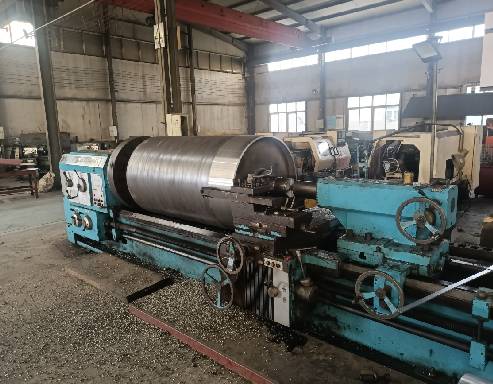 Afrikaans
Afrikaans  Albanian
Albanian  Amharic
Amharic  Arabic
Arabic  Armenian
Armenian  Azerbaijani
Azerbaijani  Basque
Basque  Belarusian
Belarusian  Bengali
Bengali  Bosnian
Bosnian  Bulgarian
Bulgarian  Catalan
Catalan  Cebuano
Cebuano  Corsican
Corsican  Croatian
Croatian  Czech
Czech  Danish
Danish  Dutch
Dutch  English
English  Esperanto
Esperanto  Estonian
Estonian  Finnish
Finnish  French
French  Frisian
Frisian  Galician
Galician  Georgian
Georgian  German
German  Greek
Greek  Gujarati
Gujarati  Haitian Creole
Haitian Creole  hausa
hausa  hawaiian
hawaiian  Hebrew
Hebrew  Hindi
Hindi  Miao
Miao  Hungarian
Hungarian  Icelandic
Icelandic  igbo
igbo  Indonesian
Indonesian  irish
irish  Italian
Italian  Japanese
Japanese  Javanese
Javanese  Kannada
Kannada  kazakh
kazakh  Khmer
Khmer  Rwandese
Rwandese  Korean
Korean  Kurdish
Kurdish  Kyrgyz
Kyrgyz  Lao
Lao  Latin
Latin  Latvian
Latvian  Lithuanian
Lithuanian  Luxembourgish
Luxembourgish  Macedonian
Macedonian  Malgashi
Malgashi  Malay
Malay  Malayalam
Malayalam  Maltese
Maltese  Maori
Maori  Marathi
Marathi  Mongolian
Mongolian  Myanmar
Myanmar  Nepali
Nepali  Norwegian
Norwegian  Norwegian
Norwegian  Occitan
Occitan  Pashto
Pashto  Persian
Persian  Polish
Polish  Portuguese
Portuguese  Punjabi
Punjabi  Romanian
Romanian  Russian
Russian  Samoan
Samoan  Scottish Gaelic
Scottish Gaelic  Serbian
Serbian  Sesotho
Sesotho  Shona
Shona  Sindhi
Sindhi  Sinhala
Sinhala  Slovak
Slovak  Slovenian
Slovenian  Somali
Somali  Spanish
Spanish  Sundanese
Sundanese  Swahili
Swahili  Swedish
Swedish  Tagalog
Tagalog  Tajik
Tajik  Tamil
Tamil  Tatar
Tatar  Telugu
Telugu  Thai
Thai  Turkish
Turkish  Turkmen
Turkmen  Ukrainian
Ukrainian  Urdu
Urdu  Uighur
Uighur  Uzbek
Uzbek  Vietnamese
Vietnamese  Welsh
Welsh  Bantu
Bantu  Yiddish
Yiddish  Yoruba
Yoruba  Zulu
Zulu Belt Drive System Featuring Idler Pulley for Enhanced Performance and Efficiency
Belt Drive with Idler Pulley An Overview
A belt drive system is a common mechanical design utilized in various machine operations, offering efficient power transmission between rotating shafts. One of the crucial components in a belt drive system is the idler pulley, which plays a significant role in improving the efficiency and functionality of the system. In this article, we will explore the principles behind belt drives, the purpose and benefits of idler pulleys, and their application across different industries.
Understanding Belt Drives
Belt drives consist of at least two pulleys connected by a flexible belt. The driving pulley, connected to a power source like an electric motor, transmits motion to the driven pulley through the belt. This mechanism is favored for several reasons, including its ability to handle power over a significant distance, its suitability for high-speed applications, and its capacity for shock absorption, which helps protect sensitive equipment from sudden loads.
Belt drives can take various forms, including flat belts, V-belts, and synchronous belts, each designed for specific applications based on factors like load requirements, speed, and the nature of the motion needed. However, one common challenge with standard belt drive systems is maintaining the appropriate tension in the belt to ensure efficient power transfer and minimize slippage.
The Role of the Idler Pulley
This is where the idler pulley comes into play. An idler pulley is a non-driven pulley that serves multiple functions in a belt drive system. Primarily, it helps maintain the tension in the belt, thereby enhancing grip on the driving and driven pulleys. This added tension minimizes the possibility of slippage, which can lead to significant efficiency losses and increased wear on the belt.
Moreover, idler pulleys can change the direction of the belt, allowing for more compact and versatile designs in machinery. This capability is particularly beneficial in equipment with tight spatial constraints. By strategically placing idler pulleys within the system, designers can optimize the layout while achieving the desired mechanical performance.
Benefits of Using Idler Pulleys
belt drive with idler pulley

2. Alignment Idler pulleys can help align the belt more effectively with the drive and driven shafts, ensuring smoother rotation and reducing the risk of misalignment-related issues.
3. Reduced Wear By facilitating better tension and alignment, idler pulleys contribute to a reduction in wear and tear on both the belt and the pulleys themselves, potentially extending the lifespan of the entire system.
4. Flexibility in Design Idler pulleys provide engineers and designers with greater flexibility in arranging belt drive systems. This adaptability is especially useful in custom machinery where space is a constraint.
5. Noise Reduction Idler pulleys can also help dampen vibrations in the belt system, resulting in quieter operation—a critical factor in settings where noise control is essential.
Applications Across Industries
Belt drives with idler pulleys can be found in various industries, from automotive and manufacturing to agriculture and robotics. In automotive applications, idler pulleys are commonly used in serpentine belt systems that power multiple components, such as the alternator, water pump, and air conditioner. These systems benefit from idler pulleys' ability to maintain tension, ensuring that the belt operates efficiently under varying loads.
In manufacturing, conveyor systems often employ belt drives with idler pulleys to facilitate the movement of materials over long distances. The idlers help manage belt tension, ensuring that materials are transported consistently and reliably.
In conclusion, the combination of belt drives and idler pulleys is a powerful engineering principle that facilitates efficient power transfer across various applications. Understanding the significance of idler pulleys not only helps in design optimization but also enhances the overall functionality and longevity of belt drive systems. As technology advances, we can expect further innovations in this area, improving performance and energy efficiency in a range of mechanical applications.
-
Revolutionizing Conveyor Reliability with Advanced Rubber Lagging PulleysNewsJul.22,2025
-
Powering Precision and Durability with Expert Manufacturers of Conveyor ComponentsNewsJul.22,2025
-
Optimizing Conveyor Systems with Advanced Conveyor AccessoriesNewsJul.22,2025
-
Maximize Conveyor Efficiency with Quality Conveyor Idler PulleysNewsJul.22,2025
-
Future-Proof Your Conveyor System with High-Performance Polyurethane RollerNewsJul.22,2025
-
Driving Efficiency Forward with Quality Idlers and RollersNewsJul.22,2025





























